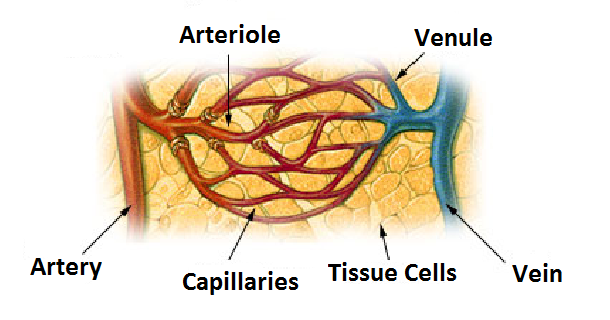18.2E: Arterioles
- Page ID
- 7847
An arteriole is a small diameter blood vessel in the microcirculation system that branches out from an artery and leads to capillaries.
- Explain the function of arterioles
Key Points
- Arterioles have muscular walls and are the primary site of vascular resistance, which reduces the pressure and velocity of flow for gas and nutrient exchange to occur within the capillaries.
- Arterioles are innervated and can also respond to other circulating factors to regulate their caliber.
Key Terms
- microcirculation: The flow of blood through the smallest vessels: arterioles, capillaries, and venules.
- arteriole: One of the small branches of an artery, especially one that connects with capillaries.
An arteriole is a small-diameter blood vessel which forms part of the microcirculation that extends from an artery and leads to capillaries.

Capillary: Arterioles are part of the microcirculation system, along with capillaries, arteries, veins, venules, and tissue cells.
The microcirculation involves the flow of blood in the smallest blood vessels, including arterioles, capillaries, and venules.
Arterioles have muscular walls that usually consist of one or two layers of smooth muscle. They are the primary site of vascular resistance. This reduces the pressure and velocity of blood flow to enable gas and nutrient exchange to occur within the capillaries. Arterioles are innervated and also respond to various circulating hormones and other factors such as pH in order to regulate their caliber, thus modulating the amount of blood flow into the capillary network and tissues.

